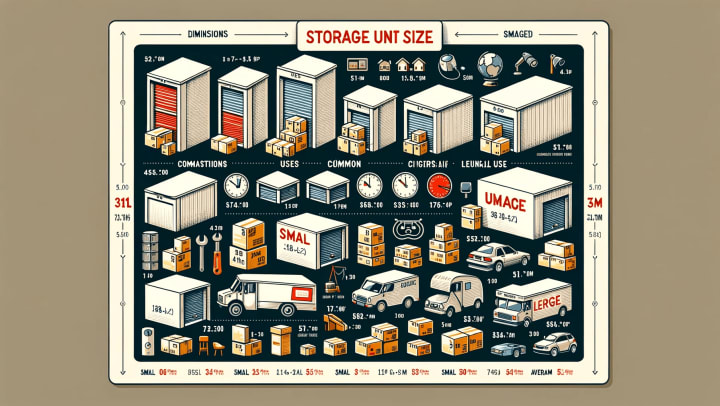Introduction:
Choosing the right storage unit size and understanding pricing structures are crucial when deciding on a storage solution. This guide will provide an overview of common storage unit sizes, their typical uses, and the factors that influence their pricing.
Chapter 1: Common Storage Unit Sizes
- Small Units (5x5, 5x10 feet): Suitable for boxes, small furniture, or seasonal items. Comparable in size to a small closet.
- Medium Units (10x10, 10x15 feet): Can accommodate the contents of a one-bedroom apartment, including furniture and appliances.
- Large Units (10x20, 10x30 feet): Ideal for storing the contents of a multi-bedroom house, vehicles, or large equipment.
Chapter 2: Estimating Your Space Needs
- Inventory List: Create a detailed list of items to store to estimate the space required effectively.
- Visualization Tools: Utilize online calculators or apps to visualize how your items might fit into different unit sizes.
Chapter 3: Factors Influencing Storage Unit Prices
- Location: Units in urban areas or near city centers typically cost more than those in rural areas.
- Climate Control: Units with climate control are more expensive but necessary for sensitive items like electronics or antiques.
- Accessibility: Ground-level or drive-up access units often command a premium due to convenience.
Chapter 4: Tips for Reducing Storage Costs
- Comparative Shopping: Check prices from multiple storage facilities to find the best deal.
- Long-term Rentals: Longer commitments can often reduce the monthly cost.
- Special Offers: Look for discounts, such as first-month free deals or reduced rates for students, military, or seniors.
Chapter 5: Understanding Contracts and Insurance
- Rental Agreements: Review the terms and conditions of the storage rental agreement carefully.
- Insurance: Consider purchasing insurance to protect your belongings from damage or theft while in storage.
Conclusion:
Selecting the correct storage unit size and understanding the associated costs can help you manage your storage needs effectively and within budget. Whether you’re storing a few boxes or an entire home’s worth of goods, choosing wisely can save you money and ensure that your belongings are protected.
Call to Action:
Assess your storage needs, explore different unit sizes, and compare prices across various facilities. Make an informed decision based on your specific requirements and budget.

